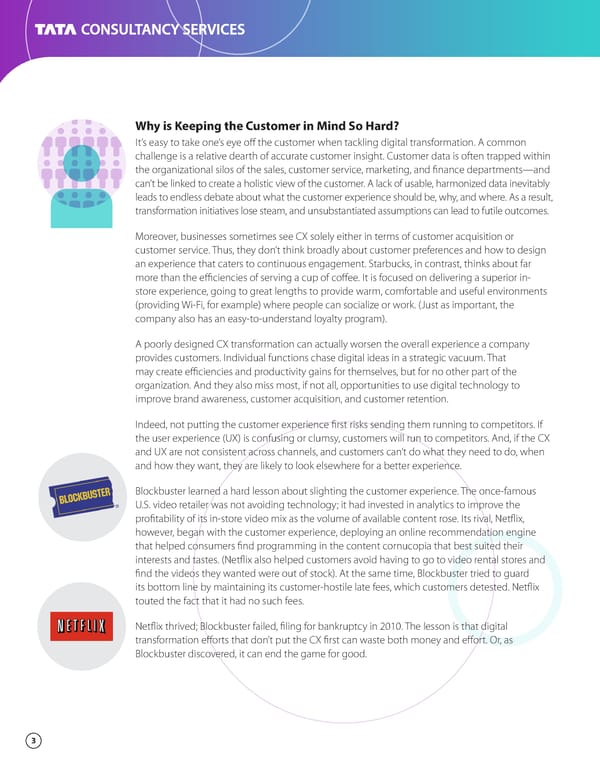Why is Keeping the Customer in Mind So Hard? It’s easy to take one’s eye off the customer when tackling digital transformation. A common challenge is a relative dearth of accurate customer insight. Customer data is often trapped within the organizational silos of the sales, customer service, marketing, and finance departments—and can’t be linked to create a holistic view of the customer. A lack of usable, harmonized data inevitably leads to endless debate about what the customer experience should be, why, and where. As a result, transformation initiatives lose steam, and unsubstantiated assumptions can lead to futile outcomes. Moreover, businesses sometimes see CX solely either in terms of customer acquisition or customer service. Thus, they don’t think broadly about customer preferences and how to design an experience that caters to continuous engagement. Starbucks, in contrast, thinks about far more than the efficiencies of serving a cup of coffee. It is focused on delivering a superior in- store experience, going to great lengths to provide warm, comfortable and useful environments (providing Wi-Fi, for example) where people can socialize or work. (Just as important, the company also has an easy-to-understand loyalty program). A poorly designed CX transformation can actually worsen the overall experience a company provides customers. Individual functions chase digital ideas in a strategic vacuum. That may create efficiencies and productivity gains for themselves, but for no other part of the organization. And they also miss most, if not all, opportunities to use digital technology to improve brand awareness, customer acquisition, and customer retention. Indeed, not putting the customer experience first risks sending them running to competitors. If the user experience (UX) is confusing or clumsy, customers will run to competitors. And, if the CX and UX are not consistent across channels, and customers can’t do what they need to do, when and how they want, they are likely to look elsewhere for a better experience. Blockbuster learned a hard lesson about slighting the customer experience. The once-famous U.S. video retailer was not avoiding technology; it had invested in analytics to improve the profitability of its in-store video mix as the volume of available content rose. Its rival, Netflix, however, began with the customer experience, deploying an online recommendation engine that helped consumers find programming in the content cornucopia that best suited their interests and tastes. (Netflix also helped customers avoid having to go to video rental stores and find the videos they wanted were out of stock). At the same time, Blockbuster tried to guard its bottom line by maintaining its customer-hostile late fees, which customers detested. Netflix touted the fact that it had no such fees. Netflix thrived; Blockbuster failed, filing for bankruptcy in 2010. The lesson is that digital transformation efforts that don’t put the CX first can waste both money and effort. Or, as Blockbuster discovered, it can end the game for good. 3
 Digital Transformation Starts with CX Page 4 Page 6
Digital Transformation Starts with CX Page 4 Page 6